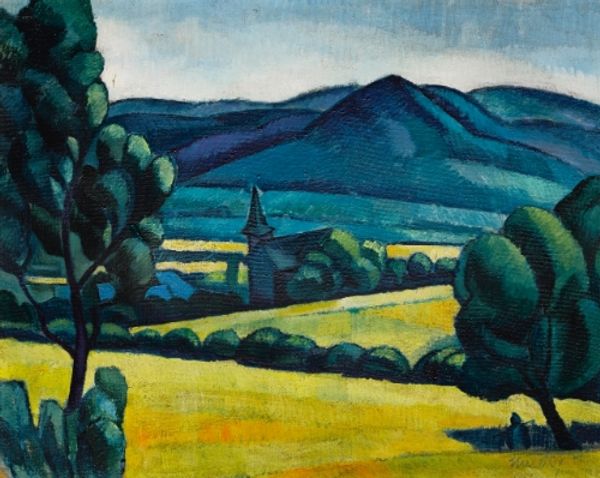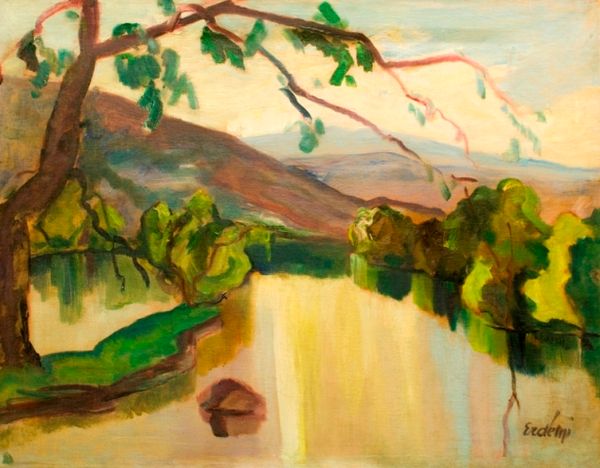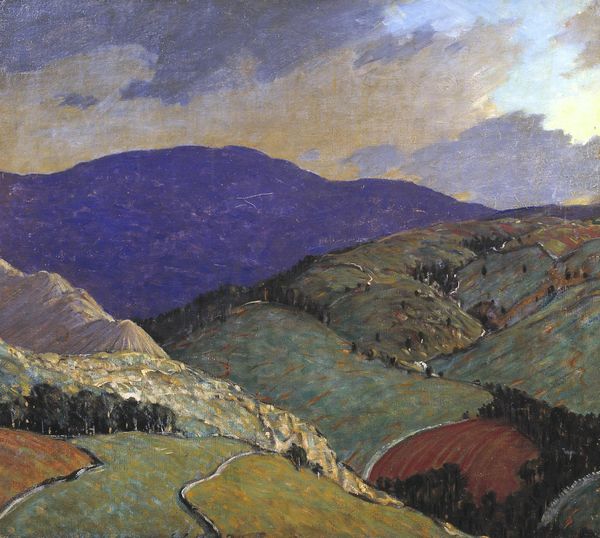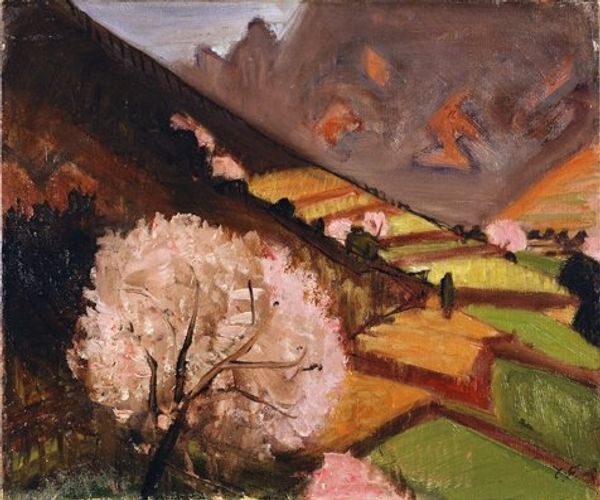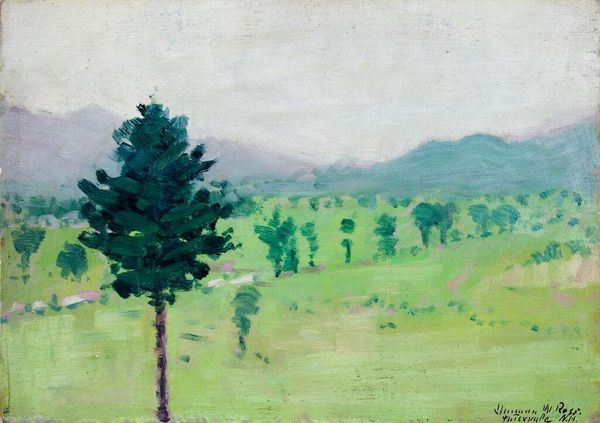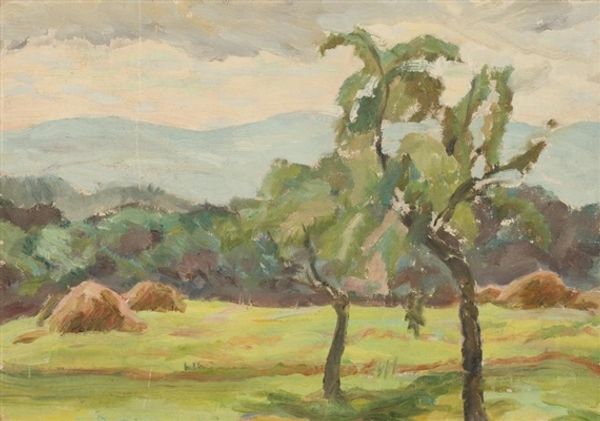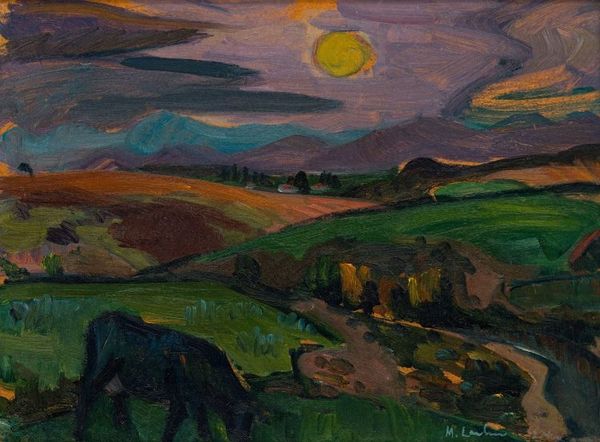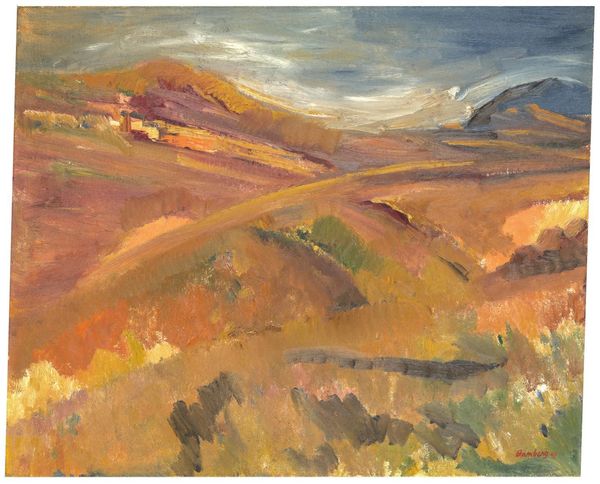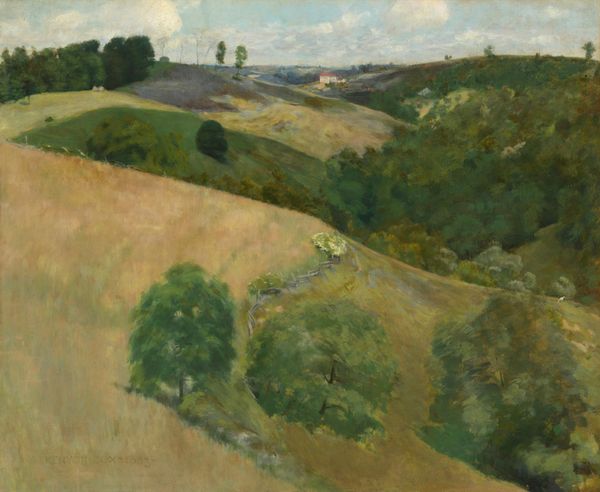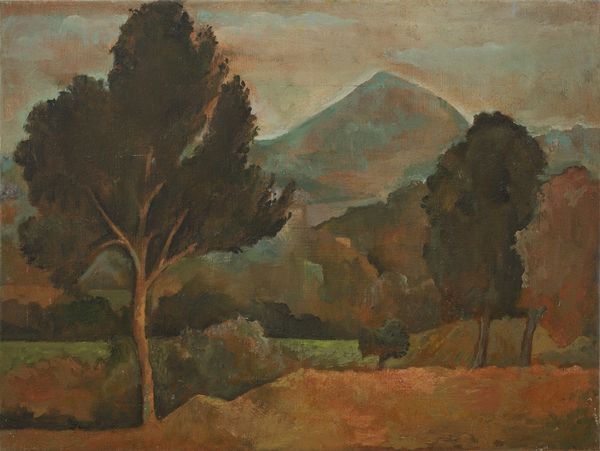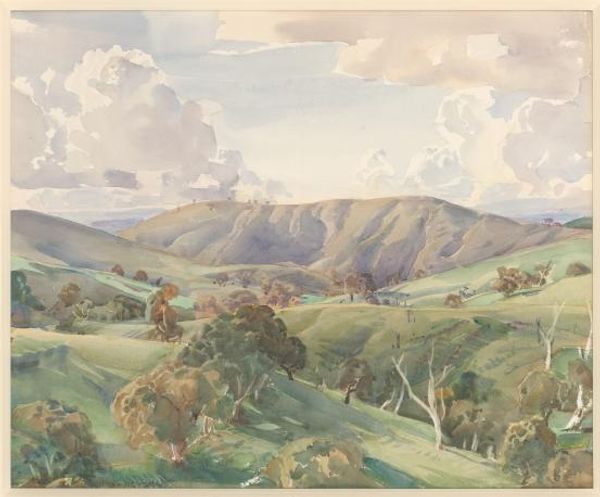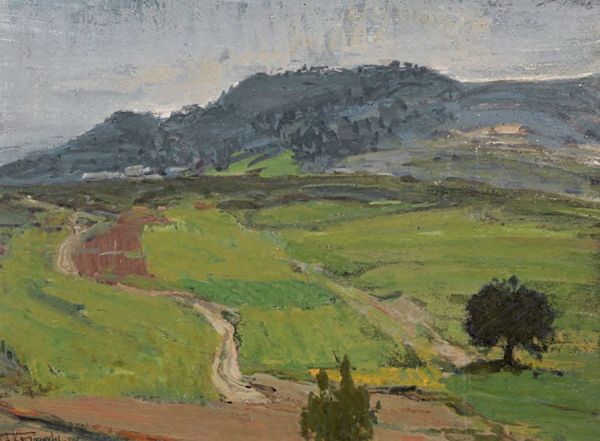
plein-air, oil-paint, impasto
#
plein-air
#
oil-paint
#
landscape
#
figuration
#
oil painting
#
impasto
#
expressionism
#
naive art
Copyright: Public domain US
Curator: Today we are observing Gabriele Munter's 1910 painting "Bergwiese," executed en plein air with oil paint. Editor: My first impression is a landscape of vibrant simplicity, there's an intentional naivety to the execution, like a child's idealized memory of nature. Curator: Precisely! The bold impasto strokes speak volumes. Note how Munter employs color not for strict representation, but for emotional evocation. The hills aren't just green; they pulsate with an almost aggressive life-force. The strokes’ visible texture reminds the viewer of paint's intrinsic viscosity. Editor: Right, this thickness and manipulation of oil invites discussion. Munter’s swift marks give a glimpse of immediacy; we see how swiftly this work had to come together in ever-changing outdoor conditions. It is raw documentation of light, the act of being, and manual labor all captured in pigment. The paint has been allowed to express its qualities, like mud, sap, or earth. Curator: Yes! Furthermore, observe the flattened perspective. Munter dispenses with traditional techniques, choosing instead a distillation of form. The mountain, rendered in simplified planes of blue, reads more as a symbol of the sublime, a peak into transcendence rather than accurate topography. This echoes the tenets of expressionism, focusing on subjective feelings over objective reality. Editor: This landscape style places people secondary, perhaps revealing industrial labor transforming fields: the trees aligned and hay bales rounded up implies that this beautiful panorama belies constant harvesting cycles in competition against elements. We get a window on rural life and agriculture without showing actual humans. Curator: That brings an important dimension into play—an ecological consideration before such terms were codified in the artistic lexicon. The very absence of figures accentuates nature's powerful role. What initially appears pastoral morphs into a statement about nature's inherent dominance. Editor: So we might ponder her attitude to material versus subject--to a rural population's reliance and shaping of the environment for labor, versus romanticized or idealized versions? Curator: Absolutely! The canvas serves as a mirror reflecting Munter's interior landscape while also, perhaps unintentionally, underscoring external factors like material culture. Editor: It enriches our engagement when considering that artists often grapple to realize an idea or render life's circumstances in oil, paint’s own limitations further altering intended impressions... Curator: Exactly; each brushstroke acts as a marker, chronicling both a momentary landscape view and complex material transformation through applied labor and intention. Editor: This intersection unveils greater narrative complexities in even simple outdoor depictions of harvested fields.
Comments
No comments
Be the first to comment and join the conversation on the ultimate creative platform.
